
Mount Everest Base Camp Trek for Seniors and Kids
- Tripadvisor 4.96 (from 243+ reviews)
- Competitive Price
- 100% Guaranteed Departures
- Expert Local Guides
Trip Information
Trip Duration
19 Nights 20 Days
Difficulty Level
Moderate
Destination
Nepal
Maximum Height
5545 m
Guiding Method
Trekking
Best Season
Spring & Autumn
Highlights
- Hike to Kalapatthar to observe the beautiful sunlight illuminating the snowy Everest Mountains
- Explore Everest Base Camp and observe the sheer magnitude of Mount Everest
- Visiting the ancient monasteries at Tengboche and Dingboche
- Exploring the major UNESCO World Heritage Sites of the Kathmandu Valley
- Enjoy the Sherpa culture and lifestyle in villages of Namche, Tengboche, and Dingboche
There is no better way to divulge the mysteries of the Himalayas than by taking the Everest Base Camp Trek. Made famous by the pioneers of mountain climbing, Tenzing Norgay Sherpa and Sir Edmund Hilary, the Everest Base Camp Trek attracts thousands of people from across the globe as they too hope to experience the same thrill that was felt more than decades ago. This base camp trek is meticulously designed to allow senior citizens and children to journey to the base camp of the highest peak in the world.
Beginning with an introduction with the Kathmandu Valley the participants of the trek explore the world heritage sites in the city. After visiting sites like Boudhanath, Swayambhunath, and Pashupatinath, a flight over the Himalayas will land you at the Lukla airport. An easy descent along the Dudh Koshi River takes us to Phakding. With ascending paths lying ahead, we move with carefully planned stops at different sites. Entering Sagarmatha National Park from Monjo, the trek heads to Namche Bazaar, a significant financial hub in the Everest region. A short trek to Khumjung allows us to understand the Sherpa cultures prevalent in the region. Maintaining our steady approach for elderly and children in the trek, we head towards Tengboche. Enjoying the views of mountains including Ama Dablam (6856m) and the Mt. Everest (8848m), we extend the trek to Dingboche. After acclimatizing at Dingboche for a day, we continue our trek due north to Thukla. As the vegetation grows sparser, we traverse along glacial moraines to reach Gorakshep via Lobuche. We take the trek in a slow and improvised manner so, elderly and child participants don’t have to worry about fatigue and altitude sickness. An exploration of the Everest Base Camp ensures a lifetime of memories with sights of Khumbu Glacier and Icefall on offer. Returning back to Gorakshep, we get on a hike to the vantage point at Kalapatthar. It is renowned to be one of the best viewpoints to witness the glamorous display of the Himalayas including the Mt. Everest (8848m), Lhotse (8414m), and Cho Oyu (8188m). The descent through the Sagarmatha National Park takes us along the same route we previously used for the ascent and ends at Lukla.
At, Nepal Ascent Treks, we value the needs and satisfaction of our clients. To do so, we introduce the Everest Base Camp Trek which can be undertaken by children and elderly people as well. Acclimatization days are plenty along the trek thus helping you to traverse the trekking trails. We assure you of a remarkable journey.
Route Map

Altitude Graph
Itinerary
Arrive at the Tribhuvan International Airport and meet our representative who will transfer you to your hotel. You can indulge in exploring the Newari culture in the valley for the rest of the day. Overnight stay at a hotel in Kathmandu.
Accommodation
3 Star Hotel
Meal
Dinner
Transportation
Private car
Today, we will explore the major UNESCO world heritage site of the Kathmandu valley which includes Swayambhunath, Pashupatinath, and Boudhanath. Kathmandu Durbar Square is another captivating tourist destination. All of these are UNESCO world heritage sites and have been ever-present with the Kathmandu city and its people. Later, we return to the hotel and prepare for the trek. Overnight stay at a hotel in Kathmandu.
Accommodation
3 Star Hotel
Meal
Breakfast
Transportation
Private car
Get on an airplane and venture all the way to Lukla, which is often called the Gateway of the Everest region. The flight provides a panoramic view of the surrounding Himalayas. Upon arrival in Lukla, we begin the trek to Phakding. Walk through forested trails which comprise of rhododendron and oaks. After trekking for a while, we reach Phakding. Overnight stay at Phakding.
Accommodation
Comfortable Teahouse
Meal
Breakfast | Lunch | Dinner
Transportation
Flight / Walking
The trail from Phakding to Monjo initially goes through the pine forests and we can see amazing scenery of the snow-laden mountains. The trail gradually climbs upward and we can catch sights of impressive waterfalls as well. We share the trails with donkeys and horses as we cross the Dudh Koshi River and arrive at Monjo. Overnight stay at Monjo.
Accommodation
Comfortable Teahouse
Meal
Breakfast | Lunch | Dinner
Transportation
Walking
After having breakfast, we join the trail and enter the Sagarmatha National Park. After paying the entry fees, we will walk along the banks of the Dudh Koshi and see Tibetan writings carved on a rock. The uphill climb shows us surreal imagery of the Himalayas and abundant flora and fauna. We finally arrive at the biggest Sherpa settlement of this region, Namche Bazaar. Overnight stay at Namche.
Accommodation
Comfortable Teahouse
Meal
Breakfast | Lunch | Dinner
Transportation
Walking
Today we acclimatize and prepare ourselves for the endearing trail that lies ahead. We shall rest in Namche Bazaar and explore the sites like the Everest View Hotel, which is often considered to be the highest altitude hotel in the world. The mountaineering museum is ripe for exploration as well. Interact with the locals residing here. Overnight stay at Namche.
Accommodation
Comfortable Teahouse
Meal
Breakfast | Lunch | Dinner
Transportation
Walking
From Namche, we begin our trek to the Sherpa village of Khumjung. The village sits near the periphery of Namche, and it is a relatively easy ascent. There, we can see the school which was built by Sir Edmund Hilary, and a quaint Buddhist monastery, which houses the scalp of a Yeti. We can observe Ama Dablam (6856m) from the viewpoint around the village. Overnight stay at Khumjung.
Accommodation
Comfortable Teahouse
Meal
Breakfast | Lunch | Dinner
Transportation
Walking
The initial trek until Phunki is relatively easy as it involves walking in not so steep trails. We can observe the vegetation slowly fading away. We make a steep climb and enter the premise of the Tengboche village. This village houses the famed Tengboche monastery, which holds scriptures and arts reflecting the principles of Buddhism. We can observe sights of mountains like Everest (8848m), Ama Dablam (6856m), and Lhotse (8414m). Overnight stay at Tengboche.
Accommodation
Comfortable Teahouse
Meal
Breakfast | Lunch | Dinner
Transportation
Walking
The trail cascades through lush forests of birch, oak, and the trail bless us with amazing views of Everest (8848m) and Ama Dablam (6856m) among plenty other peaks. We shall walk downhill to Debuche and later walk on the banks of the Imja River. Walking on the upper Pangboche trail is quite exhilarating, and we finally arrive at Dingboche. Overnight stay at Dingboche.
Accommodation
Comfortable Teahouse
Meal
Breakfast | Lunch | Dinner
Transportation
Walking
We acclimatize at Dingboche to prepare for the trails ahead. We shall climb a nearby ridge and admire the Himalayan vistas. To the northwest of the village, we can see the Khumbu Khola valley. Among the peaks visible from the village, Lobuche West (6145m) and Lobuche East (6119m) are the most dominant. Overnight stay at Dingboche.
Accommodation
Comfortable Teahouse
Meal
Breakfast | Lunch | Dinner
Transportation
Walking
The trail is relatively easy, and we have about two paths out of Dingboche. One is a bit longer, but the other is short and steep. We will choose the steep path and, along the way, we also visit the Dingboche Monastery. The trail goes through barren lands and we cross a bridge to head towards Thukla village. Overnight stay at Thukla.
Accommodation
Comfortable Teahouse
Meal
Breakfast | Lunch | Dinner
Transportation
Walking
From Thukla, the trail sees a sudden rise in elevation and we shall trek slowly in these parts. The trail winds all the way to rugged terrain and snowy environment. We walk through the Chupki Lahara and pass memorial shrines. The trail on this day also traverses glacial moraines and rather steep trails. Overnight stay at Lobuche.
Accommodation
Comfortable Teahouse
Meal
Breakfast | Lunch | Dinner
Transportation
Walking
We will walk on a glacial path and navigate through rough terrains. After trekking for a couple of hours, we arrive at the former Everest Base Camp. From here, we head to the Everest Base Camp along a challenging route. We can admire the sheer beauty of the Khumbu glacier. As we near the Everest Base Camp, we can see the amazing view of Mount Everest (8848) along with numerous colorful tents that lie on its base. Khumbu Icefall, Khumbu Glacier and numerous mountains in Everest region are in an offer from the viewpoints at Everest Base Camp. After spending some time in the base camp, we shall head back to Gorakshep. Overnight stay at Gorakshep.
Accommodation
Comfortable Teahouse
Meal
Breakfast | Lunch | Dinner
Transportation
Walking
A morning trek awaits us today as we shall climb Kala Patthar today. The morning is relatively cold so wear warm clothing and appropriate gear. Navigating through the snow leads us to the Kala Patthar, from where we can see the sunlight illuminating the entire Khumbu region. Feast at the sight of mountains in the Everest massif including the vistas of the Mt. Everest (8848m). From Kala Patthar, we shall retrace our steps and head back to Thukla. It involves going through Lobuche and small glaciers. Overnight stay at Thukla.
Accommodation
Comfortable Teahouse
Meal
Breakfast | Lunch | Dinner
Transportation
Walking
The trail sees a drastic decrease in elevation and we find ourselves in the downward trail to reach Tengboche. We shall walk along the banks of the Imja River, and rest in the Dingboche village. After having lunch there, we shall slowly walk on the trail to reach Tengboche. Visit the monastery here too and admire the Himalayan vistas. Overnight stay at Tengboche.
Accommodation
Comfortable Teahouse
Meal
Breakfast | Lunch | Dinner
Transportation
Walking
Walking along the dusty trail rewards us with an amazing view of the snowy mountains and after descending quite a bit, we arrive at Phunki Tenga. We can see Yaks and many porters active in this trail. We shall take a rest at Khumjung village, and after having lunch, embark on the trail to Namche. Overnight stay at Namche.
Accommodation
Comfortable Teahouse
Meal
Breakfast | Lunch | Dinner
Transportation
Walking
The trail to Phakding descends to the Bengkar valley where we cross the Dudh Koshi River. We walk through the villages of Chhamuwa and Monjo. We are greeted by the huge entrance of Sagarmatha National Park, and after walking along the Bhote Koshi River, we reach Phakding. You can share your travel stories and experiences on the trek as your journey nears the end. Overnight stay at Phakding.
Accommodation
Comfortable Teahouse
Meal
Breakfast | Lunch | Dinner
Transportation
Walking
The trail from Phakding to Lukla is a relatively easy one and it involves walking through the birch and oak forests. This short trek allows us to revel in the beauty of the Everest Himalayas for the final time on the trek. After arriving at Lukla, we rest for a while and head straight to our lodge. Overnight stay at Lukla.
Accommodation
Comfortable Teahouse
Meal
Breakfast | Lunch | Dinner
Transportation
Walking
From Lukla, we get on a plane and head towards Kathmandu. The flight lasts for about 45 minutes and has stupendous aerial views of the Himalayas. Upon arrival in Kathmandu, transfer to your hotel. For the remainder of the day, you can explore the city on your own. Feel free to shop for gifts and souvenirs as you do so. Overnight stay at a hotel in Kathmandu.
Accommodation
3 Star Hotel
Meal
Breakfast | Dinner
Transportation
Walking
Being the final day of your trip to Nepal, you can stroll around the nearby streets and markets, according to your flight schedules. A company representative will accompany you to the airport for your departure.
Meal
Breakfast
Transportation
Private car
Are you dissatisfied with this itinerary?
You can customize your holiday. Let us help you tailor-make your precious Vacation.
What's Included
Meal
- Breakfast,Lunch and dinner during the trek.
- Fresh seasonal fruits after the dinner (while on the trek).
Accomodation
- Lodge expenses during the trek.
- Stay in the city at finest hotel (Can upgrade of the accommodations to luxury hotels / lodge is possible at extra cost).
Staffs & Crew
- A porter and his entire expenses.
- Licensed, experienced and English speaking trekking guide.
Transportation
- Airport pickup and drop facility.
- Kathmandu-Lukla-Kathmandu flight tickets
- Transportation in private vehicle.
Permits & Paperworks
- All monument entrance fees.
- All necessary paperwork and trekking permits (National Park Permit, TIMS)
Activities
- Full day guided city tour in Kathmandu (Day 2) by a private vehicle.
Other
- 5 Hot showers (Attached bathroom) on a trek
- Down jackets and sleeping bags (provided upon request).
- First aid medical kit
- Nepal Ascent Treks duffel bag, t-shirt, and trekking map.
Complimentary Extras
- 1 hour trekkers massage / Yoga after the trip completion.
- Local sim card
- Welcome and farewell dinner at one of the finest Nepalese Restaurant with traditional ethnic music and dance.
What's Not Included
- Cost for additional trips.
- Extra hot showers, wifi & battery charging on a trek.
- International airfare to and from Kathmandu
- Meals in the city except for breakfast and other mentioned special dinner.
- Nepal arrival visa.
- Personal expenses (phone calls, laundry, bar bills, battery recharge, extra porters, bottle or boiled water, shower, etc.)
- Tipping to staffs (as an appreciation).
- Travel insurance which covers emergency rescue and evacuation.
GROUP TOURS
| Trip Date | Status | Price | Book Now |
|---|---|---|---|
Jan 2026 | |||
Feb 2026 | |||
Mar 2026 | |||
Apr 2026 | |||
May 2026 | |||
Jun 2026 | |||
Jul 2026 | |||
Aug 2026 | |||
Sep 2026 | |||
Oct 2026 | |||
Nov 2026 | |||
Dec 2026 | |||
Jan 2027 | |||
Feb 2027 | |||
Mar 2027 | |||
Apr 2027 | |||
May 2027 | |||
Jun 2027 | |||
Jul 2027 | |||
Aug 2027 | |||
Sep 2027 | |||
Oct 2027 | |||
Nov 2027 | |||
Dec 2027 | |||
Jan 2028 | |||
Feb 2028 | |||
Mar 2028 | |||
Apr 2028 | |||
May 2028 | |||
Jun 2028 | |||
Jul 2028 | |||
Aug 2028 | |||
Sep 2028 | |||
Oct 2028 | |||
Nov 2028 | |||
Dec 2028 |
Essential Info
Physical Fitness
Many people have questions as to what level of physical fitness is required for visiting Nepal, and that is extremely reliant on what activity the visitor is engaging in. With that said, for a standard trek of moderate grading (Everest Base Camp Trek is an example of moderate) the daily activity will be 7-8 hours, and elevation will generally not exceed 5,500 meters. The day’s trekking is sustained and will involve both long steep climbs, and descents with a variety of terrain underfoot from well-trodden paths, to rocks covered with ice or snow. A typical day would include a number of climbs or descents of 500 meters or more, starting after breakfast, resting at lunch, then continuous trekking until arriving at the teahouse.
In preparation for the trek, it is important to begin a training requirement at least 4 months before departing for Nepal. Three to four hours of aerobic exercise like running, walking, swimming, cycling & some gym work per week is the minimum and most will find it beneficial to add some basic strength training to their physical fitness routine. One of the best ways to prepare is to take practice hikes with a daypack roughly the same weight as what you will be taking on the trek. Do this only after a baseline of fitness has been reached. Moving fast is not the end goal, rather endurance is the focus, and will provide a more enjoyable and safe adventure.
Trekking Seasons in Nepal
There are two main seasons in which Nepal sees the most amount of visitors. Fall (September through November) being the most popular, and spring (March to May) coming in close behind. The summer months of June, July and August are the monsoon season and as such the trails are mostly washed out, and roads can sometimes be impassible due to landslide activates. Not to mention the view is non-existent. Still, there are a few places that lie in rain shadow areas and see significantly less rain if any at all, and summer can be a good time to visit these places. Winter is dry, but extremely cold and high passes become inaccessible due to ice and snow conditions. The temperature doesn’t usually fluctuate to a greater degree and the daytime temperature is around 20-25 degrees. However, the temperature starts to decrease as you gain altitude. The temperature can drop to around 0 to -10 degrees at night when staying at tented camps in Himalayan regions. However, it does not change as much in lower hilly regions and the nights are slightly colder than days.
Fall is the most popular because it’s after the monsoons, and the air is dry, the days are sunny, and everything is green in the lower valleys from the excessive rains. Spring is a popular choice because some rain returns, but the weather is generally warm and dry, and flowers are in bloom in the lower elevations.
Trekking Day
A typical trekking day begins with a cup of tea at around 6 in the morning. It is advised to pack your trekking gears in a duffle bag and essential supplies in your day pack in these early hours. After having breakfast, we begin the trek and head along the trail at around 8 am. The morning walk is designed to be longer as we begin with refreshed bodies and enthusiasm. Following a good morning’s walk, we make stop for lunch at around 11.30 am. The lunch involves group meals enjoying the vicinity around the stop. You can explore the surrounding or use the time according to your own consent. After resting for about an hour or two, we resume our trek to reach teahouse or camp by 3-4 pm. The afternoon walk is relatively shorter and can involve games and side trips as organized by the trekking guides. You also can enjoy breaks during the trek to relax, read or stroll around the area. You can converse with the local people and observe their lifestyle. Dinner is served around 7 in the evening to round off the day.
Meals and Accommodations
During the length of the trek, the accommodation style is commonly referred to as teahouse. These are family-run basic lodges that fill the role of the restaurant, meeting place, and boarding house for tourists. Electricity can be found in the rooms, which means one light bulb, and one or two outlets for charging electronics. The common areas are also lit by electricity. Teahouses may use solar, hydroelectric, or have electrical lines running into the village, so the commonality and availability of electricity may vary.
Most teahouses have private rooms, though if the trek is in a more remote or high altitude place dormitories are the norm. Each room has 1 or 2 single beds with basic bedding, and the bathroom is shared. Expect a mix of western and squat style toilets in the bathrooms.
Breakfast and dinner are taken at the teahouse and these lodges have large family style dining rooms centered on a stove to provide heat. The menu will have Nepali style western foods such as pasta, pizza, pancakes, burgers, and fries. Also on the menu is the traditional Dal Bhat meal. This is a lentil soup with rice and vegetable or meat curry. Most menus will also offer a smattering of local cuisine.
Internal Flight Delays
Nepal is an incredible country of mountains and valleys, rivers and green rolling hills. With this incredible diversity of landscapes, road travel can be extremely time consuming and flights within Nepal to reach popular trekking destinations is a must. Along with this mountainous terrain also comes the possibility of in climate weather. Not to mention the incredibly high number of visitors during peak seasons makes internal flight delays a very real possibility. To manage this possibility, it may be helpful to have a few extras days on either end of your tour. If any cancellations or flight delays do occur (high chances of flight delays from around Kathmandu to Lukla, Everest region), we also provide services to arrange helicopter to help you to be on your schedule on the premises of Civil Aviation Rules in Nepal which state that helicopters can fly if the visibility is 1500m. The cost ranges from USD350 to USD650 according to the number of passengers. The payment can be made either to the helicopter company or to us directly and can be made either by cash or using a credit card. It will also be helpful to purchase and review your insurance as some of the alternative measures for travel may be covered. Flight insurance too may cover changing your international flight if necessary.
Travel Insurance
Many expeditions and tours require that travel insurance is purchased prior to arriving in Nepal, but other treks and tours may not. However, travel insurance is definitely an important consideration. There are a number of reasons to consider insurance. Firstly, it may be required, so check to see what is being asked for by the company. Second, Nepal is a landlocked country, and there are few direct flights. Travel in and out can encounter some disruptions and if purchasing insurance, make sure flight delays and cancellations are included. The next reason to choose insurance is that, though every safeguard is in place during your tour, there are always extenuating circumstances that may result in an accident. Read the fine print of insurance policies to ensure trekking or any other activity you are engaging in is covered, as some policies have stopped covering trekking in certain places. It is impossible to have a relaxing trip without the comfort of good insurance, so do the research and choose carefully.
Nepal Visa Entry Procedure
For entry into Nepal, there are visa requirements everyone (except Indian nationals) must complete before being allowed to pass through immigration. This is for air travel as well as overland transportation. Most visitors may obtain a visa to enter Nepal, however, there are exceptions. There are a number of entry points where you can obtain the visa upon arriving by land, but Tribhuvan International Airport is the only one for air transport.
Visa on Arrival Tourist Visa
Three options are available for entry
15-day single entry: US $30
30-day single entry: US $50
90-day multiple entries: US $125
Please have a passport valid for at least 6 months from the time of entry, and have cash ready, preferably in US dollars, though there are other currencies Nepal Immigration accepts. If you are entering via overland, you must have US cash and 3 passport photos. For arrival by air, the kiosks at the airport take your picture for you.
For the most up to date list of exceptions for visa on arrival or to obtain the most current visa information, visit the Nepal Department of Immigration website.
Acute Mountain Sickness (AMS)
Acute Mountain Sickness is usually seen in un-acclimatized people shortly after ascent to high altitudes. The condition occurs due to the thinning of air as the altitude increases. The condition, if not taken seriously and treated immediately, can be life-threatening and its symptoms can be seen generally above 3000 meters. Some of the symptoms of AMS are nausea, vomiting, tiredness, shortness of breath and cerebral pain. The treks are designed to properly acclimatize you to the change in high altitude climate and sufficient precautionary measures too are taken to take utmost caution. We also equip our staffs with cell phones and satellite phones in occurrence of any emergency cases. We are greatly driven to keep the safety and security of our clients as our foremost concern.
Drinking Water
Water is essential for life, and clean water is imperative while on holiday. When choosing to visit less developed countries it is a concern that all travelers should consider. A few options are available when trekking or traveling in Nepal that will mitigate any chances of drinking contaminated water which could cause disruption of an otherwise fun adventure. The first consideration to take into account is that tap water should not be ingested. That even means when brushing your teeth. Most will choose to buy bottled water and if doing so make sure the cap has not been opened previously. Plastic bottle refuse is a problem, and with that being said there are other options on the market to assist in making water drinkable. Your local outdoor store can help with choosing what option might be best to use in conjunction with a reusable bottle. Your guide can also steer you to water that has been filtered and purified so ask him or her what is available.
Arrival Instruction
Upon your arrival at Tribhuvan International Airport, our company representatives are stationed to welcome you to the country. We request you to carefully look for your name being held by our representatives following the events upon landing. The representatives are responsible to escort you to your hotel in Kathmandu. You will see men offering you to carry luggage and take you to your destination as you exit the airport. We request you to pay no attention to these people and follow the designated representatives and follow their instructions. You will also need to keep an eye on your luggage and belongings to avoid any complications.
Best customer service, wonderful activities
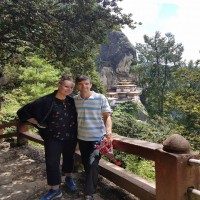
Jonathan Hillman
CALife time trip to Langtang with NAT
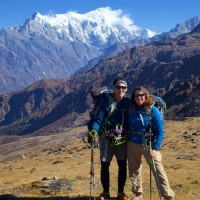
Ann Ross
USA journey of a lifetime, in good hands
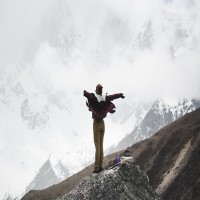
Nayelli Carrera
CRAmazing trekking to Poon Hill
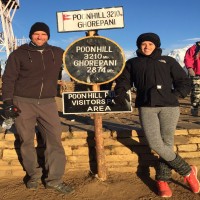
Eduardo Ruaro
BRHike to Annapurna Base Camp
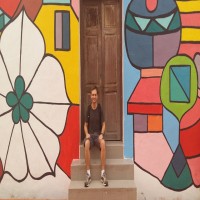
Ed Duesterberg
USPrice per person
US$ 2,101
US$ 2,574





